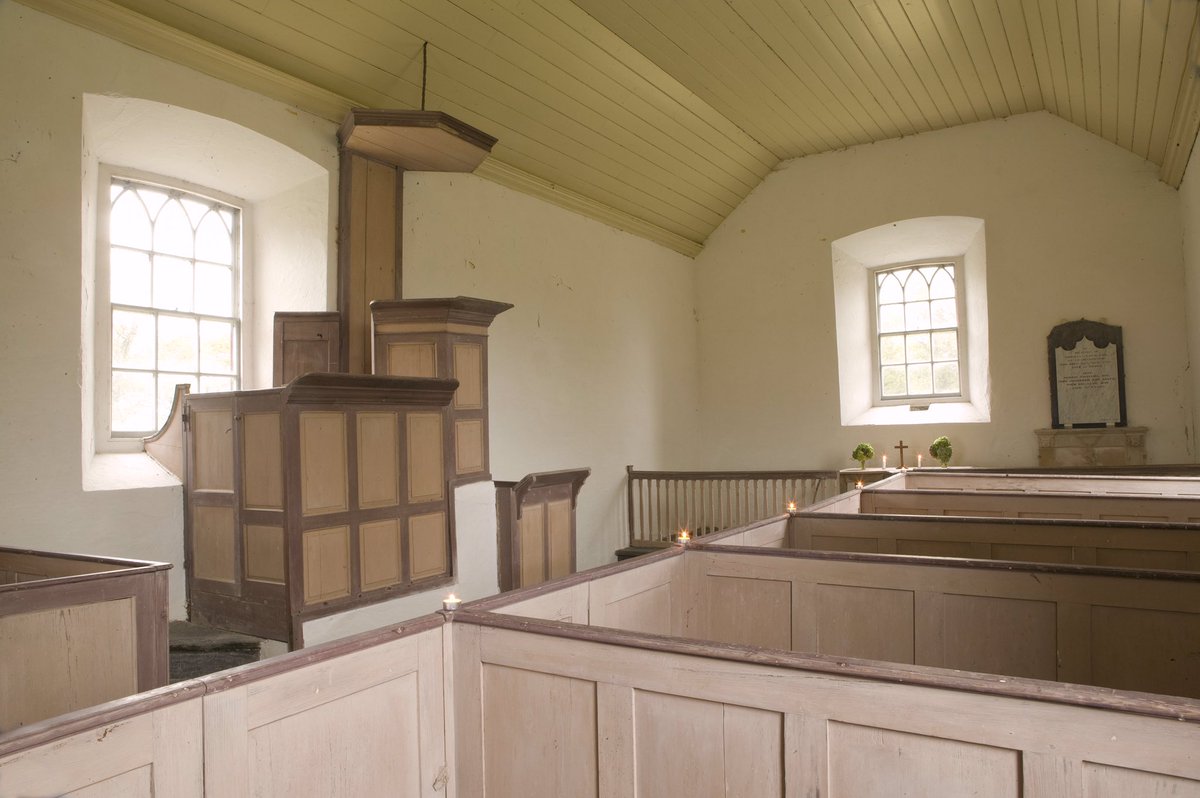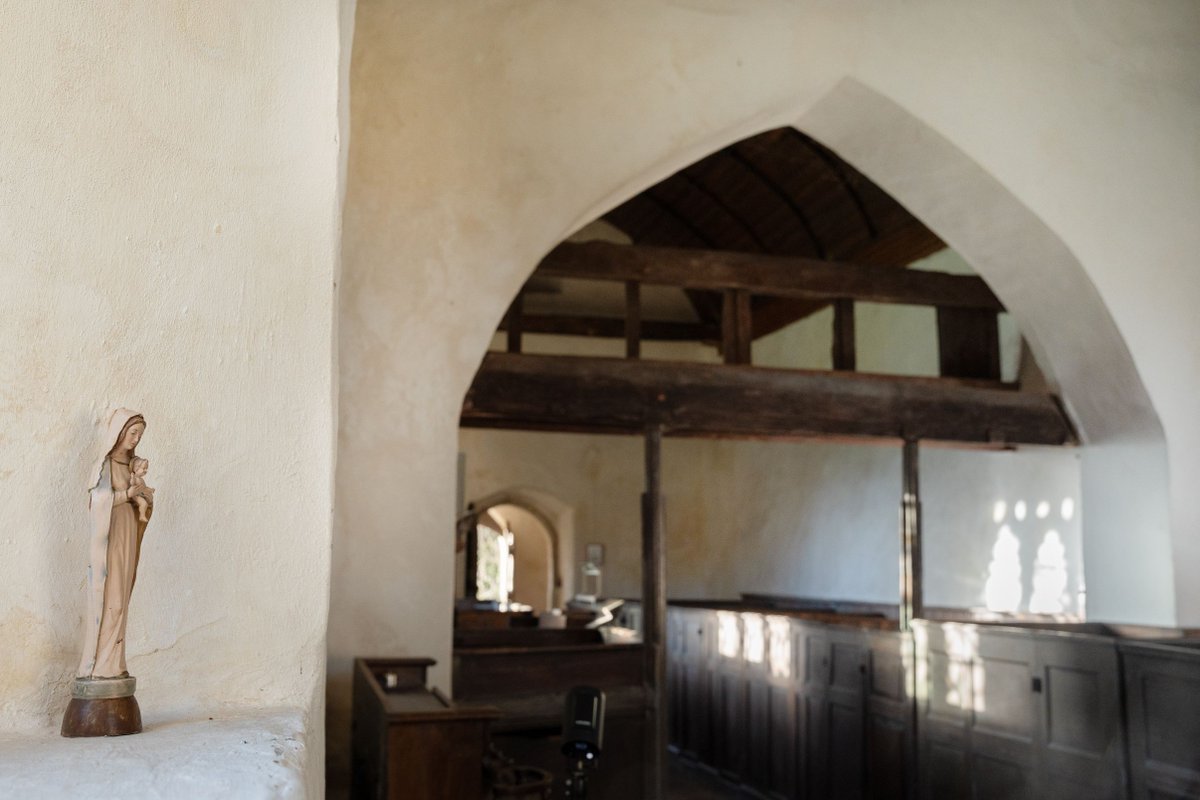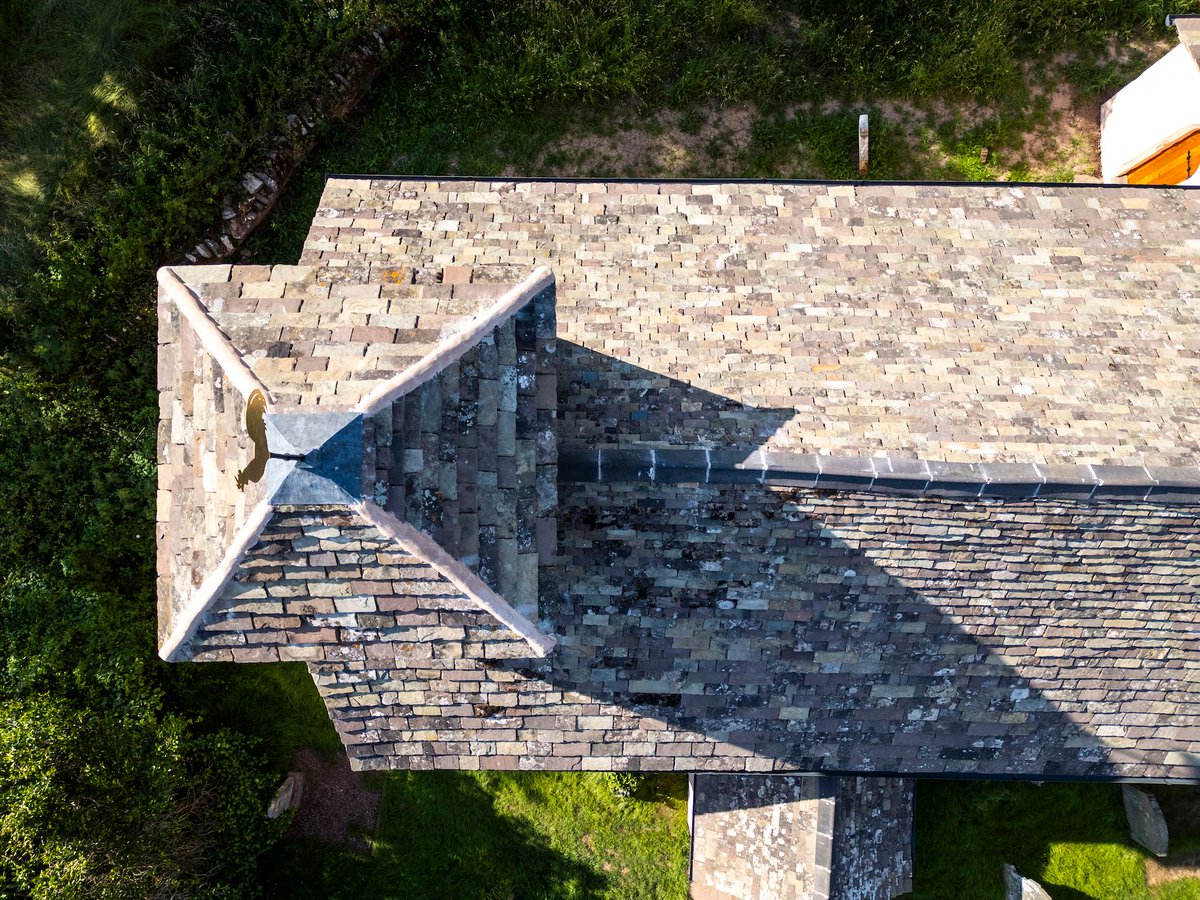The church that time forgot.
Over a stone stile, St Andrew's, Bayvil nestles in crunchy bracken. Overlooking Newport Bay, the church survives almost entirely as the Georgians left it.
But St Andrew's is a bit of an enigma. Nobody knows when it was built or by whom.
#thread
Over a stone stile, St Andrew's, Bayvil nestles in crunchy bracken. Overlooking Newport Bay, the church survives almost entirely as the Georgians left it.
But St Andrew's is a bit of an enigma. Nobody knows when it was built or by whom.
#thread

From the outside the Gothick windows are the only hint of what may lie inside.. Lifting the latch on the bead-and-butt west door, an interior “of delightful and luminous simplicity” is revealed.
2/
2/

A complete set of box pews lines the south wall. A crenelated vestry enclosure takes up the northwest corner. But the chief joy is the triple-decker panelled pulpit, reading desk, and clerk’s desk - the former so tall it almost touches the ceiling with its sounding board.
3/

3/


The woodwork is painted in a distinctive late Georgian scheme, which we have not re-painted or retouched – just gently washed.
4/
4/

In the southwest corner, you'll spy the most ancient element - the font. Possibly a survival from an earlier church on the site, it's a lopsided cushion-cut bowl on a thick, moulded shaft, rising to just under a metre in height. It's believed to date from the 12th century.
5/
5/

In 1828 the church was described as being in “tolerable repair” and “tolerably furnished with all things convenient for the country church”.
This is frustratingly vague! Could this be before the Georgian restoration? Or after?
6/
This is frustratingly vague! Could this be before the Georgian restoration? Or after?
6/

We do know that, between 1813 and 1828 it was served by a non-resident minister, who was the vicar at several South Pembrokeshire churches, but who, in fact lived at Emsworth, Hampshire.
7/
7/

St Andrew’s will continue to keep its secrets for now. One of the great pleasures of our parish churches is their mystery… how gradually, over time, they reveal clues to their past lives.
8/
8/

• • •
Missing some Tweet in this thread? You can try to
force a refresh






















